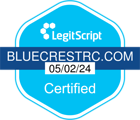Prescription drug misuse, often stemming from physical or emotional distress, involves overuse or inappropriate use of prescribed medication. Signs of misuse may include unusual sleep patterns, weight changes, mood swings, and social withdrawal. It’s important to recognize these signs early on – through vigilant monitoring of physical and behavioral changes – and seek professional help to manage any potential dependency. This guarantees the proper address of physical symptoms and psychological triggers caused due to misuse. Additionally, it helps in understanding the underlying causes and effects on overall quality of life. Pursue this knowledge to strategize an effective intervention and prevention plan.
Understanding Prescription Drug Misuse
One must first comprehend that prescription drug misuse encapsulates a broad range of behaviors, including the use of medication without a prescription, in a manner other than as prescribed, or for the experience or feelings elicited. This misuse often stems from various triggers, such as physical or emotional pain, peer pressure, or the desire for a mental escape.
The pernicious nature of such misuse can go undetected, gradually entrenching the victim in a cycle of dependency. Understanding these misuse triggers forms an integral part of the wider battle against prescription drug misuse, as it allows for the development of targeted intervention approaches.
Intervention approaches must be multifaceted, addressing not only the physical symptoms of misuse but also the underlying psychological triggers. These strategies may include cognitive-behavioral therapy to alter harmful thought patterns, group counseling for peer support, and medical treatment to manage physical withdrawal symptoms.
Prevention also plays an important role. By educating individuals about the dangers and consequences of misuse, and encouraging proper use, storage, and disposal of prescription drugs, we can reduce the likelihood of misuse. Therefore, understanding prescription drug misuse is the first step toward meaningful intervention and prevention.
Commonly Misused Prescription Drugs
Shifting our focus to specific substances, it is imperative to identify and understand the most commonly misused prescription drugs to make headway in addressing this pervasive issue. Mainly, opioids, central nervous system depressants, and stimulants are often misused due to their addictive properties.
Prescription affordability issues can exacerbate this problem. When patients cannot afford their prescribed medication, they may resort to misusing cheaper, yet harmful alternatives. This creates a vicious cycle of misuse that can be challenging to break.
Simultaneously, doctor shopping behaviors – a practice where patients visit multiple physicians to obtain numerous prescriptions – contribute significantly to this issue. This practice not only fuels the misuse but also makes it difficult to track and monitor, hindering effective solutions.
Understanding these commonly misused drugs and their associated behaviors paves the way for more effective interventions. It also helps in determining the root causes, which can range from affordability issues to manipulation of the healthcare system. As we explore these complexities further, the need for a multifaceted approach becomes increasingly evident to combat prescription drug misuse effectively.
The Psychology Behind Drug Misuse
Delving into the psychological aspects of prescription drug misuse reveals a complex interplay of factors, including emotional distress, mental health disorders, and societal pressures, that contribute to this concerning behavior. The Drug Misuse Origins can often be traced back to unresolved emotional turmoil or untreated mental health conditions. Prescription drugs may provide temporary relief from these issues, leading to misuse as a coping mechanism.
The interplay between psychological factors and drug misuse is often a vicious cycle. For instance, a person with anxiety may misuse benzodiazepines for their calming effects, yet the misuse can exacerbate anxiety levels, leading to increased use. This illustrates the Misuse of Coping Mechanisms that can inadvertently fuel the cycle of addiction.
Moreover, societal pressures and expectations can also play a significant role in prescription drug misuse. For example, students may misuse stimulants in a bid to enhance academic performance, succumbing to the pressure to excel. It is, thus, important to address these underlying psychological factors in the fight against prescription drug misuse. Only by understanding the roots of this issue can we develop effective prevention and intervention strategies.
Recognizing Physical Signs of Misuse
In the domain of prescription drug misuse, recognizing physical signs is an essential step toward understanding and addressing this pervasive issue. The body often reveals the first indications of misuse, and two key physical symptoms to watch for are weight fluctuations and sleep disturbances.
Weight fluctuations, both gain and loss, can be indicative of prescription drug misuse. Certain medications, especially opioids and antidepressants, can alter metabolism and appetite, leading to unexpected weight changes. Additionally, drugs may cause fluid retention, contributing to weight gain. Conversely, stimulants can suppress appetite, resulting in weight loss.
Sleep disturbances are another telltale sign. Prescription drugs such as sedatives and hypnotics can cause excessive sleepiness or drowsiness, while stimulants may lead to insomnia. Notably, abrupt changes in sleep patterns, such as bouts of insomnia followed by periods of excessive sleep, may suggest misuse.
Identifying Behavioral Changes
Beyond the physical symptoms, behavioral changes serve as significant indicators of prescription drug misuse, warranting close attention and analysis. These alterations in a person’s behavior frequently manifest in two key areas: financial instability and relationship deterioration.
Financial instability often stems from the high costs associated with obtaining prescription drugs illegally. An individual may start to demonstrate unusual financial behaviors, such as borrowing money frequently, selling possessions, or even resorting to theft. Frequent job changes or unexplained job loss may also indicate a problem.
On the other hand, relationship deterioration is another significant behavioral change to watch for. This could manifest in the form of increased conflicts with family members, isolation from social groups, or loss of old friends. An individual may also display changes in their priorities, choosing drug use over responsibilities or relationships.
These behavioral changes can be subtle, developing gradually over time, making them somewhat challenging to identify. Hence, it is important to maintain open lines of communication and to approach the situation with empathy and understanding, always looking for patterns rather than isolated incidents. Through awareness and early intervention, it is possible to help a loved one struggling with prescription drug misuse.
Emotional Indicators of Prescription Misuse
Emotional indicators can serve as telling signs of prescription drug misuse, often presenting before physical symptoms become apparent. These can manifest as unusual mood swings, heightened levels of anxiety, and episodes of depression leading to social isolation. Recognizing these emotional shifts is vital in identifying and addressing prescription drug misuse at an early stage.
Unusual Mood Swings
While it may seem subtle at first, unusual mood swings can be a telltale sign of prescription drug misuse, often manifesting in an individual’s behavior as sudden changes in their emotional state.
These mood swings may be triggered by the body’s reaction to the substances in the drugs, causing abrupt shifts between euphoria and depression. Understanding such mood swings triggers can help in identifying potential misuse.
Furthermore, there’s a significant correlation between prescription drug misuse and bipolar disorder. Individuals with bipolar disorder, characterized by extreme mood swings, may misuse prescription drugs as a form of self-medication.
However, this only exacerbates the instability of their emotional state, leading to a vicious cycle that requires professional intervention.
Increased Anxiety Levels
An alarming surge in anxiety levels often serves as a potent emotional indicator of prescription drug misuse. This increased state of unease can be triggered by the body’s dependency on certain drugs, causing distress when the substance is not available. However, this symptom is frequently overlooked, as anxiety can be a common response to life’s stressors.
Pharmacological interventions may initially provide relief, but they often contribute to a cycle of dependency and anxiety. Hence, exploring anxiety medication alternatives is essential. Practices such as mindfulness, cognitive-behavioral therapy, and lifestyle changes can offer sustainable relief without the risk of misuse. Recognizing and addressing this cycle is pivotal in preventing prescription drug misuse and promoting healthier coping strategies.
Depression and Isolation
A significant portion of individuals grappling with prescription drug misuse may exhibit pronounced symptoms of depression and a marked tendency towards isolation, highlighting the profound emotional toll of this prevalent issue.
1. A depression diagnosis, often characterized by persistent sadness, loss of interest in activities, and a significant decrease in energy, can be a significant indicator of prescription drug misuse.
2. The social isolation impact, resulting from withdrawal from friends, family, and social activities, can further exacerbate the emotional distress experienced by individuals misusing prescription drugs.
3. Such withdrawal can also act as a breeding ground for substance misuse, as the lack of a supportive network may hinder the process of seeking help or recognizing the severity of the issue.
This intricate relationship between depression, isolation, and prescription drug misuse necessitates a holistic approach to identification and intervention.
Consequences of Ongoing Drug Misuse
Chronic misuse of prescription drugs inevitably leads to a multitude of adverse effects, impacting not only one’s physical health but also their mental well-being and overall quality of life. One cannot overlook the legal implications that arise from continued misuse, which can range from minor offenses such as possession to more severe charges including drug trafficking. The societal stigma attached to drug misuse exacerbates the psychological distress, often leading to social isolation.
The physical health consequences are substantial and diverse, with damage to essential organs such as the liver, heart, and brain. This could lead to long-term complications like liver cirrhosis, heart diseases, and cognitive impairment, and can even be fatal. For instance, opioid misuse can depress the respiratory system, leading to fatal overdoses.
Moreover, the mental health implications are equally severe. Chronic misuse of prescription drugs can lead to disorders such as depression, anxiety, and psychosis. The societal stigma linked to drug misuse can worsen these conditions, as individuals may feel marginalized and misunderstood, further driving their dependency on the drugs. The cumulative impact of these factors significantly deteriorates the quality of life, making recovery a challenging process.
Effective Communication With a Suspected User
Despite the numerous negative consequences of prescription drug misuse, initiating a dialogue with a suspected user requires tact, empathy, and a non-judgmental approach, as effective communication can play a pivotal role in acknowledging the problem and exploring avenues for assistance.
1. Family interventions: The family unit can provide a supportive environment for confronting a suspected user. However, it’s important to manage this process with care, ensuring the user does not feel attacked or cornered, which may lead to increased resistance or denial.
2. User denial: Denial is a common response in those struggling with substance misuse. An individual may minimize the severity of their actions or refuse to acknowledge the issue altogether. It’s vital to approach this denial with understanding and patience, reinforcing the concern for their well-being rather than focusing on the substance misuse itself.
3. Sustained dialogue: Regular, open conversations can gradually break down walls of denial and resistance. By maintaining a steady flow of communication, you provide the user with constant reassurances of care, concern, and the willingness to help.
Effective communication is a delicate balancing act and is critical in paving the way towards recovery. It can facilitate the user’s shift from denial to acceptance, and ultimately, to seeking professional help.
Seeking Professional Help
Once the potential misuse of prescription drugs has been identified, the critical step of seeking professional help emerges.
The process involves intricate tasks such as locating reliable therapists and understanding the labyrinth of insurance coverage.
In this segment, we will explore these aspects, guiding how to navigate these concerns with efficacy and confidence.
Identifying Reliable Therapists
In the challenging journey towards overcoming prescription drug misuse, finding a trustworthy and competent therapist is an essential step that requires careful evaluation and assessment. Here are three key aspects to keep in mind:
1. Therapist qualifications: Seek therapists with a strong educational background and relevant certifications in addiction counseling. Their experience in dealing with prescription drug misuse is vital for providing effective PHP drug treatment.
2. Online counseling: In the digital age, many therapists offer online services. This option provides flexibility, allowing you to engage in therapy sessions from the comfort of your home.
3. Therapist’s approach: A therapist’s method should align with your needs and preferences. Some may use cognitive-behavioral therapy, while others may prefer a more holistic approach.
Navigating Insurance Coverage
Understanding and maneuvering through the complexities of insurance coverage is a critical factor when seeking professional help for prescription drug misuse. It is essential to be proactive in understanding policy loopholes. These could potentially affect the extent and type of treatment covered, which may create unexpected financial burdens.
Additionally, understanding co-payment strategies can greatly reduce out-of-pocket costs. Engaging with insurance providers, asking detailed questions, and seeking advice from experts can help navigate these potential pitfalls.
It’s equally important to stay informed about changes to insurance laws and policies that could impact coverage. Maneuvering insurance coverage can be complex, but with careful attention and strategic planning, it’s possible to secure the necessary treatment and support.
Prevention and Education Strategies
To effectively curb the escalating issue of prescription drug misuse, it is imperative to implement robust prevention and education strategies. The strategies should focus on stigma reduction, community initiatives, and improved access to treatment.
1. Stigma Reduction: The stigma associated with prescription drug misuse often prevents individuals from seeking help. Strategies aimed at reducing stigma can foster open discussions about the issue, normalize the process of seeking help, and ultimately deter misuse.
2. Community Initiatives: Grassroots efforts led by community organizations can play a pivotal role in prevention. These initiatives can involve educational programs, workshops, and campaigns to raise awareness about the risks and consequences of prescription drug misuse.
3. Enhanced Access to Treatment: It is essential to ensure that individuals struggling with misuse have access to effective treatment services. This includes therapy, counseling, and medication-assisted treatment.
These strategies, when implemented together, can create a supportive environment that discourages prescription drug misuse. Notably, the success of these strategies relies heavily on the collective effort of individuals, families, healthcare professionals, and community leaders. Prevention and education are powerful tools in combating this public health issue.

Final Thoughts
Prescription drug misuse is a significant societal issue that requires vigilance, understanding, and effective intervention strategies. Recognizing physical and behavioral changes, communicating effectively with suspected users, and seeking professional help are critical steps in addressing this issue.
Continuous education and prevention strategies can further mitigate the prevalence of prescription drug misuse, ultimately fostering healthier individuals and communities. Therefore, combating prescription drug misuse necessitates a holistic, multidisciplinary approach.
Frequently Asked Questions
What Are the Legal Consequences of Misusing Prescription Drugs?
Legal ramifications of misusing prescription drugs can be severe, including criminal charges such as illegal possession or distribution. Penalties may range from fines to imprisonment, depending on the jurisdiction and specifics of the case.
Can the Misuse of Prescription Drugs Lead to Addiction to Other Substances?
Yes, misuse of prescription drugs can lead to addiction to other substances. Addiction triggers, like withdrawal symptoms, can prompt the use of alternate substances, potentially leading to polydrug addiction. Early intervention is essential.
How Does Prescription Drug Misuse Impact One’s Career or Academic Performance?
Prescription drug misuse can lead to performance decline and cognitive impairment, which negatively impacts one’s career or academic performance. The impaired judgment and decreased productivity often result in missed opportunities and potential career or academic downfall.
Are There Any Support Groups Available for Individuals Struggling With Prescription Drug Misuse?
Yes, numerous support groups utilize PHP recovery strategies and therapeutic approaches to assist individuals struggling with prescription drug misuse. These include Narcotics Anonymous, SMART Recovery, and various online forums offering peer support and professional guidance.
What Role Does Family History Play in the Misuse of Prescription Drugs?
Family history plays a significant role in prescription drug misuse. Genetic predispositions can increase susceptibility, while environmental influences, such as witnessing familial drug misuse, can contribute to an individual’s likelihood of engaging in similar behavior.


















